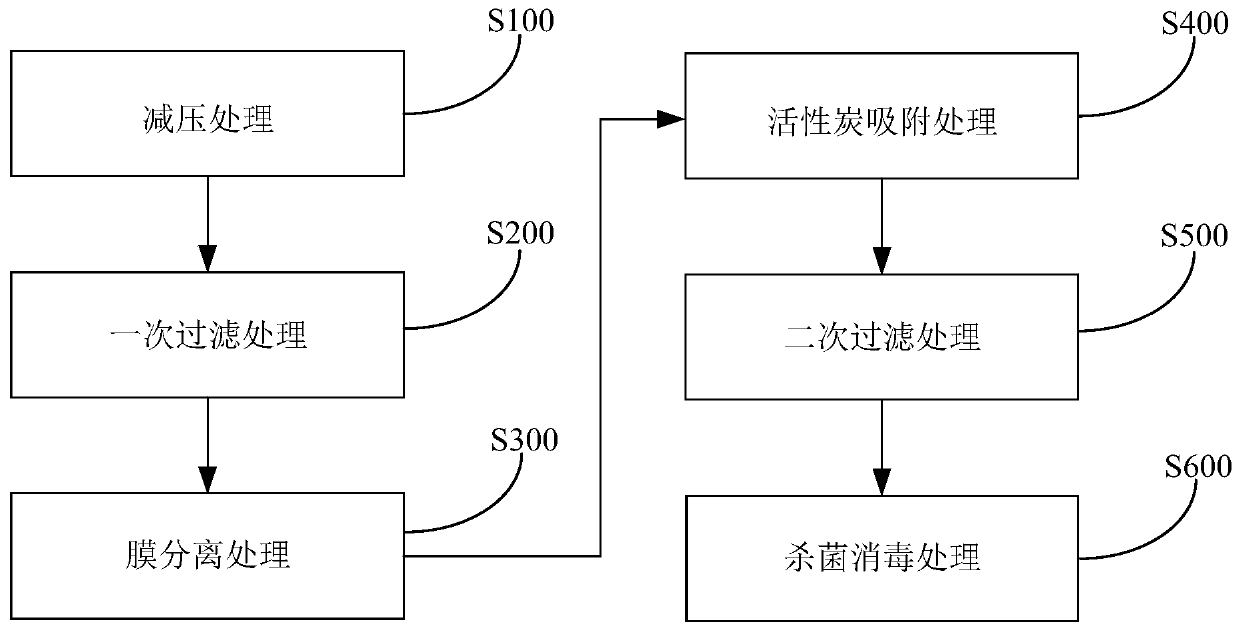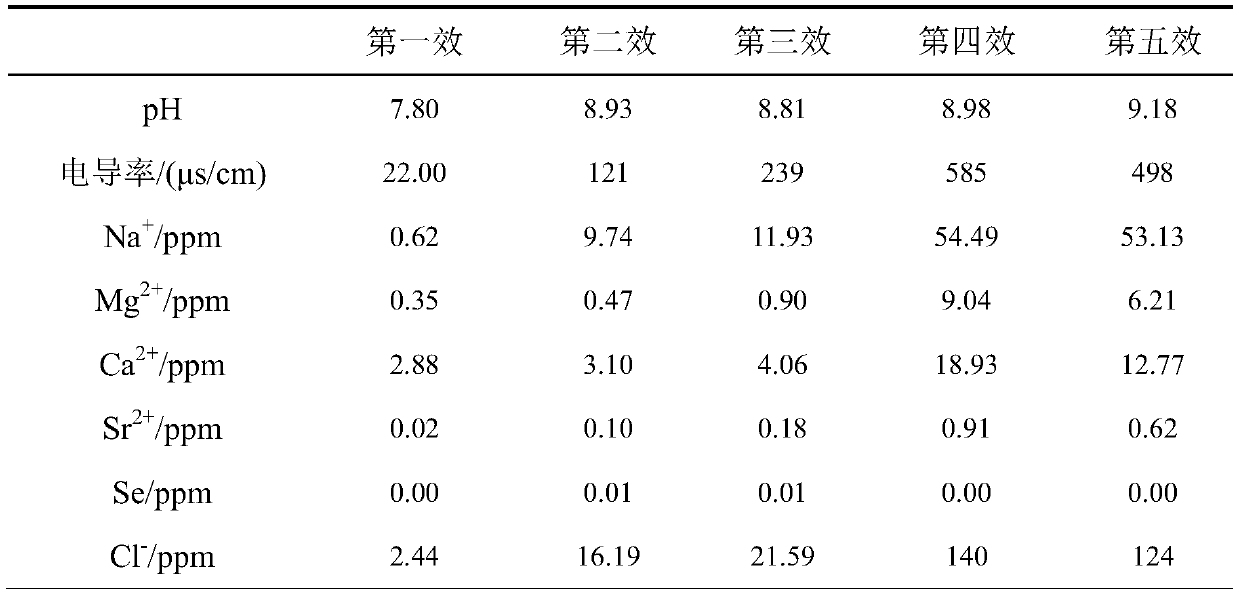Method and system for preparing drinking weak base water and strontium-rich electrolyte raw material water from salt-making distilled water
An electrolyte, strontium-rich technology, used in chemical instruments and methods, water/sewage treatment, water/sewage multi-stage treatment, etc., can solve the problems of inability to drink directly, affecting the taste of water, and high pH
- Summary
- Abstract
- Description
- Claims
- Application Information
AI Technical Summary
Problems solved by technology
Method used
Image
Examples
Embodiment 1
[0062] The distilled water for salt production is obtained from the industrialized five-effect evaporation salt production system of Sichuan Zigong Chiyu Salt Products Co., Ltd. After ICP analysis, the main ion content of each effect condensate is shown in Table 1. The ion content of different effects is different, but gradually increases from the first effect to the fifth effect. Among them, the sodium ion content is 0.6-60 ppm, the calcium ion content is 2-13 ppm, and the strontium ion content is 0.02-1 ppm. It can be seen that the salt-making distilled water can be used as the raw water for preparing drinking water, but according to its source, ion enrichment or regulation needs to be carried out to meet the standard requirements.
[0063] Table 1 Main ion content of five-effect evaporation salt-making distilled water
[0064]
Embodiment 2
[0065] Example 2: Removal of residual hydrogen sulfide in distilled water for salt production
[0066] Get the distilled water of the first effect to the fifth effect in the embodiment 1, measure the distilled water sulfide of the first effect to the fifth effect according to the assay method of the sulfide content in the national standard GB 8538-2016 "Drinking Natural Mineral Water Inspection Method" The content of the material was 0.01ppm, 0.02ppm, 0.04ppm, 0.05ppm and 0.05ppm, respectively. The above-mentioned distilled water was treated by vacuum suction filtration at room temperature (about 25° C.), the pressure was 1 kPa, and the residence time was 30 minutes. After the treatment was completed, the sulfide content in the water sample was measured. The sulfide content of the distilled water is less than 0.01ppm, which meets the national standard requirements for sulfide content in drinking water.
Embodiment 3
[0067] Example 3: The effect of primary filtration on ion content
[0068] Microfiltration was selected as the primary filtration, and the microfiltration membrane used was the TORAY microfiltration membrane produced by a Japanese company. The water samples containing 100ppm sodium ions, 20ppm calcium ions and 1ppm strontium ions were continuously subjected to microfiltration membrane filtration treatment at room temperature (about 25°C), the pressure was 0.15MPa, and the membrane flux was natural flux (that is, no control of the flow rate). quantity). The ion content of the filtered water sample was measured by ICP, and the measured sodium ion content was 102 ppm, the calcium ion content was 19.5 ppm, and the strontium ion content was 0.96 ppm. It can be seen that the use of microfiltration membrane for one filtration treatment will basically not cause the reduction of ion content.
PUM
 Login to View More
Login to View More Abstract
Description
Claims
Application Information
 Login to View More
Login to View More - R&D
- Intellectual Property
- Life Sciences
- Materials
- Tech Scout
- Unparalleled Data Quality
- Higher Quality Content
- 60% Fewer Hallucinations
Browse by: Latest US Patents, China's latest patents, Technical Efficacy Thesaurus, Application Domain, Technology Topic, Popular Technical Reports.
© 2025 PatSnap. All rights reserved.Legal|Privacy policy|Modern Slavery Act Transparency Statement|Sitemap|About US| Contact US: help@patsnap.com



